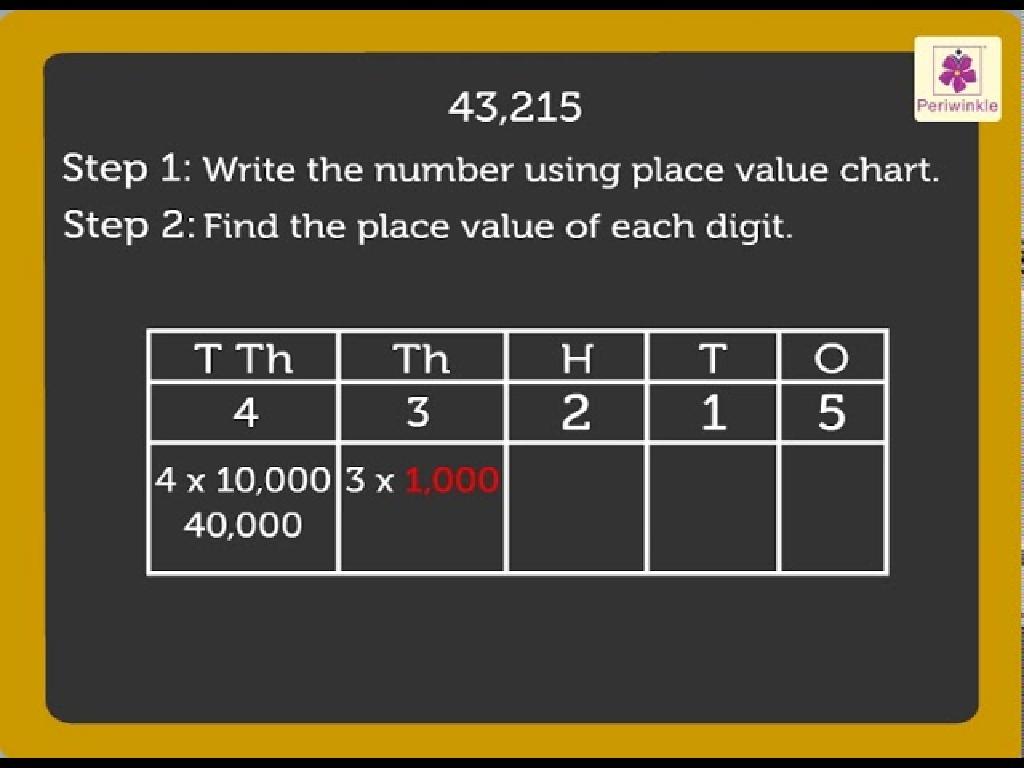Formatting Titles
Subject: Language arts
Grade: Sixth grade
Topic: Formatting
Please LOG IN to download the presentation. Access is available to registered users only.
View More Content
Welcome to Formatting Titles!
– Importance of title formatting
– Proper formatting helps readers understand text structure
– Defining titles and their significance
– Titles are the names of books, articles, and more
– Exploring title formatting rules
– Learn specific rules for capitalization and style
– Preview of today’s lesson
|
This slide introduces the concept of formatting titles, which is crucial for clear written communication. Emphasize to students that formatting titles correctly helps readers understand the importance and hierarchy of various texts. Titles can be for books, movies, articles, and other works, and they need to stand out appropriately. During the lesson, students will learn the rules for capitalizing and styling titles, such as using italics or quotation marks. This overview sets the stage for the day’s activities, which will include identifying and practicing the correct format for various types of titles.
Understanding Formatting in Writing
– Define formatting in writing
– Arranging text to make it readable and appealing
– Formatting’s role in reading/writing
– Helps guide readers through a text
– Formatting examples in texts
– Books, essays, articles use different formats
– Practice formatting titles
|
This slide introduces the concept of formatting within the context of writing and reading. Formatting refers to the way text is organized on a page, which includes aspects like font size, typeface, and title placement. It plays a crucial role in guiding readers through the content, making it easier to follow and understand. Provide examples of formatting by showing different text types, such as book titles, essay headings, and article subheadings. Emphasize the importance of correctly formatting titles to distinguish them from other text. Encourage students to practice formatting by identifying titles in various texts and explaining why they are formatted in a certain way. This will help them grasp the practical application of formatting rules in their own writing.
Formatting Different Types of Titles
– Formatting book titles
– Books: Italicize or underline, e.g., Harry Potter
– Formatting movie titles
– Movies: Use italics, e.g., Finding Nemo
– Formatting article titles
– Articles: Use quotation marks, e.g., ‘The Secret Garden’
– Usage of title formats
|
This slide aims to teach students the proper way to format various types of titles in their writing. Emphasize the importance of consistency and adherence to the standard rules of formatting. For book titles, students should italicize or underline if handwriting. Movie titles are also italicized. Article titles, on the other hand, should be enclosed in quotation marks. Explain that these formatting styles help distinguish different types of works and clarify what is being referenced in their writing. Provide examples for each and encourage students to practice by bringing in examples of each type of title for discussion.
Rules for Formatting Titles
– Capitalize major words in titles
– Capitalize the first and last word, and all major words in between.
– Italicize or underline books & movies
– For example, italicize ‘The Giver’ or underline The Giver.
– Use quotes for articles & poems
– For instance, ‘The Road Not Taken’ by Robert Frost.
– Learn the exceptions
– Some words like ‘and’, ‘or’, ‘but’ are not capitalized unless they are the first or last word.
|
This slide introduces students to the standard rules for formatting titles in written works. Emphasize the importance of capitalizing not just the first word but all major words in titles, which includes nouns, pronouns, verbs, adverbs, and adjectives. Explain that book and movie titles should be either italicized or underlined to set them apart from the rest of the text. Short works like articles and poems should have their titles enclosed in quotation marks. Lastly, discuss the exceptions to these rules, such as not capitalizing conjunctions or prepositions unless they are the first or last word in the title. Provide examples for each rule to help students understand and remember them. Encourage students to practice these rules by formatting titles in their writing.
Practicing Title Formatting
– Identify correctly formatted titles
– Correct given title formats
– Use capital letters for main words
– Explain your corrections
– Discuss why each correction was made
– Share with the class
|
This slide is designed for a class activity on title formatting. Students will practice identifying titles that are formatted correctly according to standard English conventions. They will then apply their knowledge by correcting a list of incorrectly formatted titles, ensuring that main words in the titles start with capital letters. After making corrections, students will explain the reasoning behind their changes to the class, reinforcing their understanding of the rules. The teacher should prepare examples of titles for students to correct and be ready to guide them through the process, providing explanations and answering questions as needed. This activity will help students to better understand the importance of proper formatting in writing.
Formatting Titles in Writing
– Importance of title formatting
– It makes your writing look professional and helps with clarity.
– Integrating titles in texts
– Use italics or quotes for book titles in essays and reports.
– Practice with book titles
– Write a paragraph and correctly format a book title within it.
|
This slide introduces the concept of proper title formatting, which is crucial for clear and professional writing. Emphasize to students that titles of larger works like books and movies are typically italicized, while shorter works such as poems and articles are placed in quotation marks. Provide examples of both. For the practice activity, students should write a paragraph that includes the title of a book they have read, ensuring they format the title correctly. This exercise will help reinforce the rules of title formatting and give students a practical application of the concept.
Class Activity: Title Formatting Challenge
– Split into groups for a title hunt
– Format titles using proper rules
– Remember: capitalize key words, use italics for books
– Present your formatted titles
– Discuss challenges faced
– Share difficulties and learn from each other
|
This activity is designed to reinforce the rules of title formatting in a collaborative and interactive way. Have the students split into small groups and look for book, article, and movie titles. Each group should then apply the rules of title formatting, such as capitalizing important words and using italics or quotation marks as appropriate. Afterward, groups will present their formatted titles to the class, allowing students to learn from each other’s work. Conclude with a group discussion about any challenges they encountered and how they overcame them. This will help students understand common pitfalls and how to avoid them. Possible variations of the activity could include formatting titles from different genres or identifying incorrectly formatted titles and correcting them.
Wrapping Up: Formatting Titles
– Recap title formatting rules
– Remember, book and movie titles are italicized, articles and poems in quotes.
– Consistency is key in formatting
– Using the same rules every time makes your writing look professional.
– Homework: Practice with real titles
– Find titles of books, movies, or articles and apply the rules we learned.
– Be ready to present your work
|
As we conclude today’s lesson on formatting titles, remind students of the key rules for formatting different types of titles. Emphasize the importance of consistency in applying these rules to ensure clarity and professionalism in their writing. For homework, students should find five titles of any mix of books, movies, articles, or poems and format them correctly using italics and quotation marks as practiced in class. Encourage them to be prepared to present and explain their choices in the next class, fostering a deeper understanding and retention of the formatting rules.





